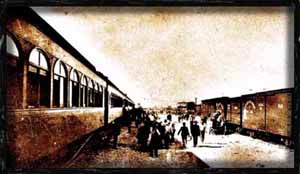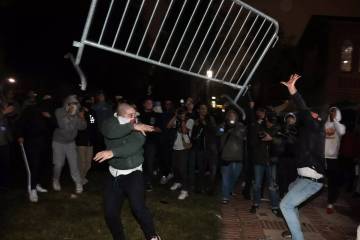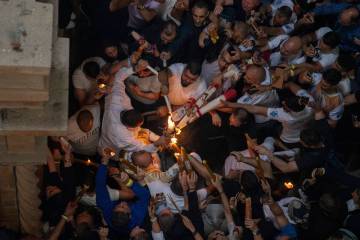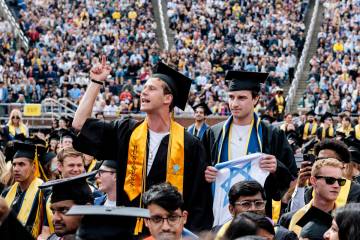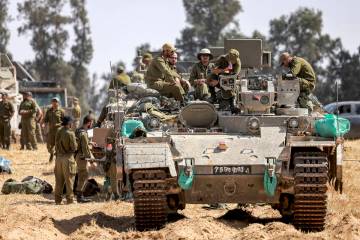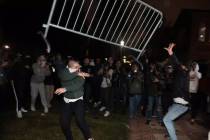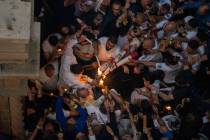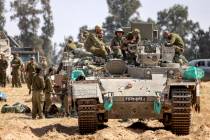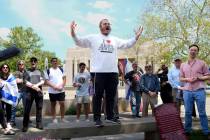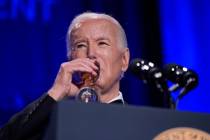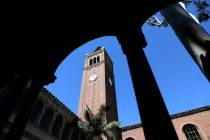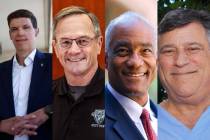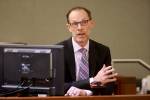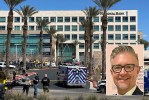Part I: The Early Years
"The First 100: The Early Years" is the first of three special sections the Review-Journal will publish to mark the millennium and the end of the century that brought Las Vegas into being.
A year ago the Review-Journal decided to avoid the mistake so many communities have made of letting their history vanish with the passing of old-timers who participated in the events shaping their places and their times. "Las Vegas is unusual in that it was created entirely in the 20th century," Publisher Sherman R. Frederick noted in announcing The First 100 project in March 1998. "Many of those who made the important decisions remain alive, while immediate relatives and close acquaintances of others still survive. This gives the Review-Journal a special opportunity to portray them and their accomplishments with authentic detail, which newspapers and historians in other cities would envy."
With that, the Review-Journal committed its staff to a 17-month effort to tell Las Vegas' story with in-depth profiles of 100 colorful men and women who left their mark in Southern Nevada. Special Projects Editor A.D. Hopkins and writer K.J. Evans, both experienced writers of history, were assigned to the project full time.
KLVX-TV, Channel 10, the educational television station for Las Vegas, joined with the Review-Journal in the effort, sharing interviews and sources with the newspaper.
Deciding which Las Vegans ought to be remembered was the first and most difficult task. Seeking suggestions from Review-Journal readers as well as historians and journalists, editors gathered nominations for more than 300 individuals to be profiled in depth. Some individuals were nominated by many different sources. Making decisions even more difficult because few of the nominations were spurious or weak. Strong arguments could be made that most of the 300 should be profiled.
The Review-Journal does not represent that these are the most important 100 people who could have been selected, only that they did important things and were highly interesting folks. Nor did the editors attempt to rank their importance; it seemed more appropriate to organize them in order of their appearance on center stage.
"The First 100: The Early Years" deals with those who made their marks here from the valley's discovery by explorers until the outset of World War II. The movers of the middle years will be profiled on May 2, and those of recent times on Sept. 12. All The First 100 are to be profiled in a book to be published by Huntington Press of Las Vegas.
Hopkins and Evans are both former editors of Nevadan, a Review-Journal Sunday magazine that specialized in historical pieces and in-depth profiles. Hopkins also asked certain local historians and some of the Review-Journal's star writers to contribute stories.
Historical consultants for the project were Robert Faiss, former city editor of the Las Vegas Sun and now an attorney specializing in gaming law; Michael Green, a history teacher at Community College of Southern Nevada; Eugene Moehring, a history teacher at UNLV and author of a respected history of Las Vegas; Frank Wright, curator at the Nevada State Museum & Historical Society; and W.V. "Bill" Wright, former chairman of the museum's board.
W.V. Wright, who was better known for many years as general manager of the Review-Journal until his retirement in 1981, died in August after a short illness. He continued his involvement with The First 100 until a few weeks before his death.
Others who were greatly helpful to the project included the staffs of UNLV Special Collections and the Nevada State Museum & Historical Society; Elizabeth Warren of the Nevada Women's Archives; and Joanne L. Goodwin, an oral history teacher at UNLV.
The cover, graphics and page layouts were designed by Ched Whitney.
AUTHORS
A.D. Hopkins, editor of The First 100 project, is a 30-year resident of Las Vegas and for 12 years edited Nevadan, the Sunday magazine formerly published by the Review-Journal, which frequently explored the sort of community history chronicled here. At the Review-Journal, he is special projects editor, which involves in-depth hard news reporting.
Kenneth J. Evans was a lifelong resident of Nevada, grew up in North Las Vegas, and graduated from the University of Nevada, Reno in 1982 with a degree in journalism. He was a reporter and editor at several rural Nevada newspapers, and was the editor of Nevadan, the Sunday magazine formerly published by the Review-Journal. In 1992, Evans was appointed media relations manager for the Nevada Commission on Tourism, where he served until returning to the Review-Journal early last year to work on The First 100 project.
Joan Whitely is a 13-year resident of Las Vegas. She earned a master's degree in journalism from Northwestern University in 1982. Currently she writes for the Living section of the Review-Journal, and has won a coveted Best of The West award for feature writing.
Dennis McBride is a Boulder City writer who specializes in local history. His published books include "Boulder City: How it Began," and "Hard Work and Far From Home: The Civilian Conservation Corps at Lake Mead."
Alan Balboni teaches at Community College of Southern Nevada, where his subjects include American immigration history and American government. His book, "Beyond the Mafia: Italian Americans and the Development of Las Vegas," was published by the University of Nevada Press in 1996.
Robert Stoldal is general manager of Las Vegas One, a 24-hour television news source, and was news director at KLAS-TV, Channel 8, during the late 1970s and 1980s, when it consistently led local newscasts in the Nielsen ratings. Stoldal has been a student of Southern Nevada history since his family moved here in 1957.



